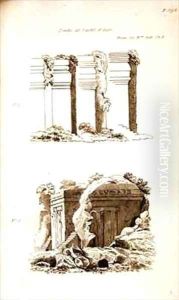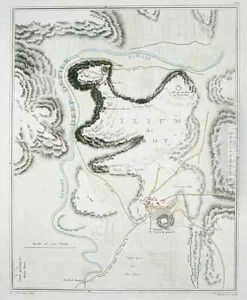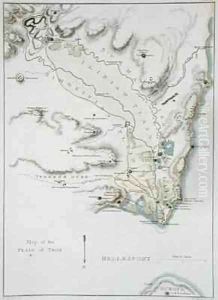Gell, Sir William Paintings
Sir William Gell was an English classical archaeologist, illustrator, and author, born in 1777 in Hopton, Derbyshire, England. He was known for his detailed studies and illustrations of the antiquities of Greece and Italy, contributing significantly to the field of archaeology during the early 19th century. Gell was educated at Emmanuel College, Cambridge, where he showed an early interest in the classical world, a passion that would define his career.
After completing his education, Gell embarked on extensive travels throughout the Mediterranean, visiting sites in Greece, Italy, and Asia Minor. His journeys were not merely tours but rigorous scholarly endeavors. He meticulously recorded his observations of ancient ruins, landscapes, and architectural details through sketches and notes. These materials would later form the basis of his published works, which were celebrated for their accuracy and detail.
Gell's publications, including 'The Topography of Troy' (1804), 'The Geography and Antiquities of Ithaca' (1807), and 'Pompeiana; the Topography, Edifices, and Ornaments of Pompeii' (1817-1832), were instrumental in the advancement of archaeological methodology. His work on Pompeii, in particular, provided one of the earliest detailed studies of the site, predating the extensive excavations that would follow in the later 19th century. Gell's illustrations and descriptions helped to stimulate interest in archaeology and the ancient world among the British public.
In recognition of his contributions to the field of archaeology, Gell was knighted in 1814. He was also a member of numerous prestigious societies, including the Society of Dilettanti, which aimed to promote interest in classical art and culture. Despite suffering from ill health in his later years, Sir William Gell continued to work and publish on ancient sites until his death in 1836 in Naples, Italy.
Gell's legacy is that of a pioneering figure in archaeology, whose meticulous work laid the groundwork for future generations of archaeologists. His publications, rich in detail and illustration, remain valuable resources for scholars and enthusiasts of the ancient world.


